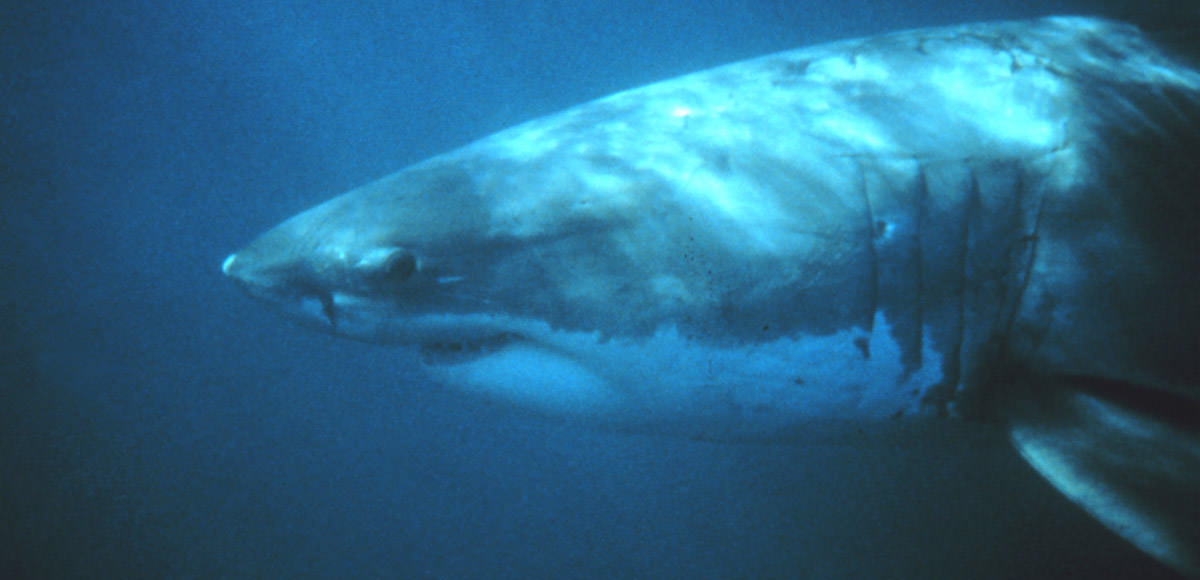White Shark Natural History

Greater Farallones National Marine Sanctuary protects the wildlife and habitats of one of the most diverse and bountiful marine environments in the world. This area is one of the top four major upwelling areas in the world. These biologically and nutrient rich waters provide sustenance for major populations of top predators, including White Sharks. White Sharks depend on the rich waters of the sanctuary, and as apex predators play a key role in maintaining a balanced ecosystem.
Each fall, adult and sub-adult White Sharks frequent the waters of the sanctuary. Adult White Sharks are seen most frequently in the area between Tomales Pt., Año Nuevo Island and the Farallon Islands, where elephant seals and sea lions are abundant.
Marine mammals are an important food source for adult and sub-adult White Sharks, particularly pinnipeds, which have a high fat content. White Sharks also feed on whale carcasses. It is thought that they feed relatively infrequently and may only eat a few seals while in the sanctuary. It is important not to interfere during a feeding event. White Sharks expend a significant amount of energy migrating across the Pacific and need to accumulate as much energy as possible during their short feeding season in sanctuary waters.
White Sharks are globally distributed apex predators found primarily in temperate and sub-tropical waters. They spend time both far at sea and near the coasts.
The best known estimations of coastal aggregations of White Sharks include:
- Australia/New Zealand (Feb.–Oct.): 133 juvenile and sub-adult individuals (Dudley, 2010).
- South Africa (Apr.–Oct.): 1,279 juvenile and sub-adult individuals (Cliff et al., 1996).
- The First Population Estimate for White Sharks in South Africa Using Photo Identification and Automated Software: Estimate across all age classes is 908 (Towner et al., 2013 )
- Northwest Atlantic (migrate between New England and Florida): Number of individuals is unknown.
- Northeastern Pacific Population estimates:
- Central California (Tomales Pt. and Farallon Islands) (Aug.–Nov): 219 adult and sub-adult individuals (Chapple et al., 2011; study did not include data from Ano Nuevo).
- Mexico (Guadalupe Island) (Jul.–Jan.): 133 adult and sub-adult individuals
(Sosa-Nishizaki, 2010).
- NOAA Fisheries Service Northeastern Pacific Population estimate: estimate: total population estimate across all ages classes is ~3000 (2013 Status Review Report).
In the Northeastern Pacific, young of the year and juvenile White Sharks are commonly found along the Southern California Bight and south into central Baja Mexico (Vizcaino Bay). The Northeastern Pacific population of adult and sub-adult White Sharks migrates to an offshore area called the Shared Offshore Foraging Area (SOFA) or "the White Shark Café" (Domeier and Nasby-Lucas, 2008; Jorgensen et al., 2009). Scientists are unsure why they visit this area. This area is the only known location where adult and sub-adult White Sharks from Mexico and California intermingle.

